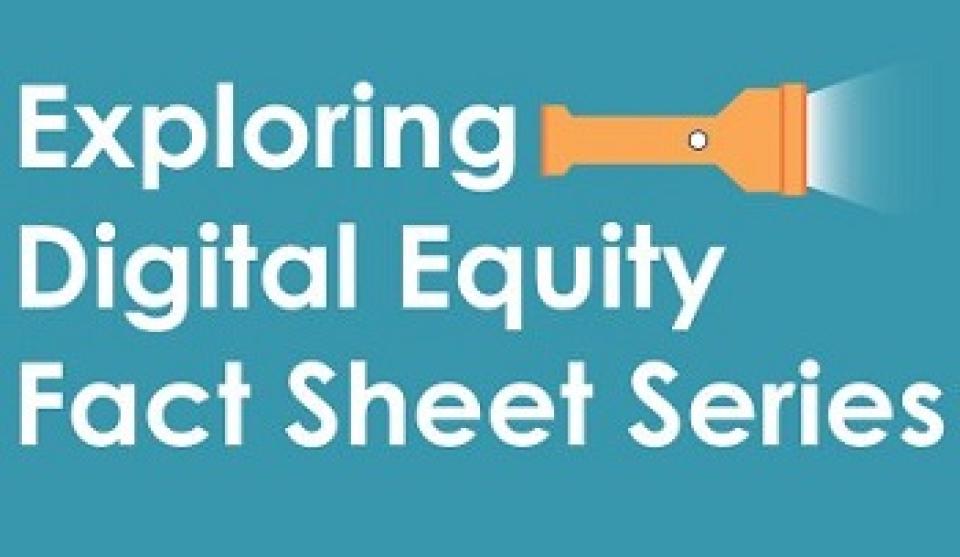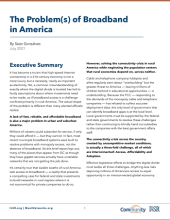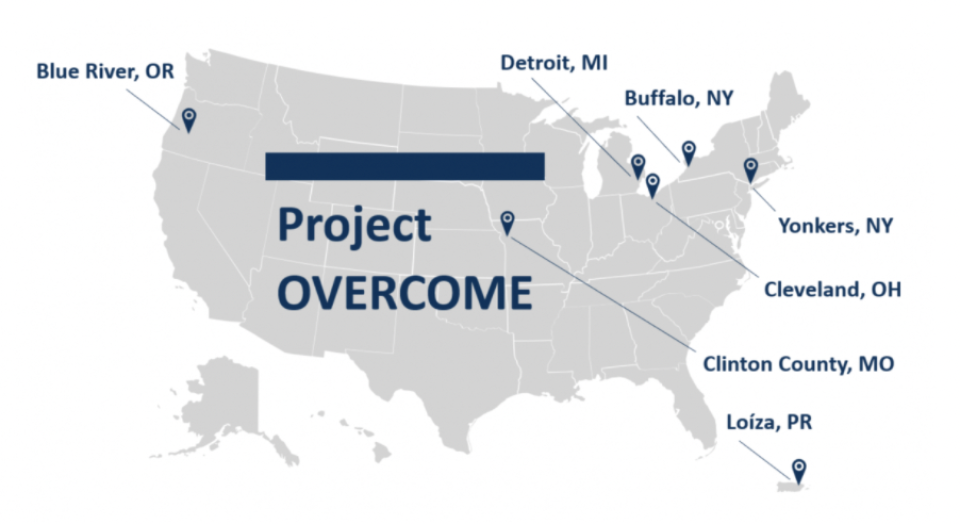
Fast, affordable Internet access for all.

In a release today, the Federal Communications Commission (FCC) announced it was voiding applications by two of the biggest Rural Digital Opportunity Fund (RDOF) bidders from December 2020. This includes more than $885 million for Low-Earth Orbit (LEO) provider Starlink and more than $1.3 billion for LTD Broadband, Inc.
LTD’s original winning bids are spread across 15 states, but there has been speculation brewing since late last year from industry experts as to if funds would be released at all. We’ve seen 12 releases from the FCC since late winter authorizing funds for most of the winning bidders (from the monopoly providers to consortia of rural electric cooperatives), which we’ve collected in our Rural Digital Opportunity Fund Dashboard here. Conversely, there has been relatively little conversation about why Starlink had not yet received any of its winning bids.
Skepticism about Speed, Deployment and Cost
On Monday last week, the White House made much ado of an announcement that it had secured commitments from a collection of large Internet Service Providers (ISPs) to adjust speed tiers and monthly costs for their existing plans so as to be able to offer a $30/month, minimum 100 megabit per second (Mbps) download offering for low-income households across the country. The goal was to create plans for households that qualify for the $14.2 billion Affordable Connectivity Program (ACP) to get access to faster connections while ensuring no additional out-of-pocket costs. The recent White House announcement said that the 20 private-sector providers that have joined together cover 80 percent of households (skewed towards urban areas).
There’s no argument that the move will directly benefit hundreds of thousands of households by boosting their wireline connections and reducing their monthly expenses. And yet, it’s a treatment of the symptom rather than the disease, as the administration continues to refuse to address the larger structural dynamics that have made Internet access increasingly expensive in this country and perpetuated a broken marketplace via poor regulation and a lack of strong leadership.
This will become immediately apparent the moment that the Affordable Connectivity Program runs out of money, and those households suddenly face higher costs with no option for recourse. Our analysis shows that even if only a third of eligible households ultimately enroll (ten percent more households than are enrolled today), absent an additional allocation, the fund will be exhausted by the beginning of November 2024. But even under the best-case scenario, with the benefit reaching as many people as possible, current enrollment rates show that only 68 percent of eligible households will be able to sign up before the funds run out. In this model, the money will be exhausted just 18 months from now, on January 1st, 2024.
A Necessary Benefit, But There Are Enrollment Disparities
What is digital equity? And why is access to ubiquitous, reliable and affordable high-speed Internet service so vital? The technological issues involved can sometimes seem confusing, especially for those who came of age before the Internet fundamentally transformed how we interact.
That’s why the Institute for Local Self Reliance, with support from AARP, has created the Exploring Digital Equity Fact Sheet Series. The series contains six user-friendly, easy-to-understand fact sheets to help demystify the challenges associated with creating digital equity.
We are releasing the entire series today, while AARP will feature the fact sheets as part of its Livable Communities initiative, an effort to support neighborhoods, towns, cities and rural areas in creating safe, walkable streets; age-friendly housing and transportation options; access to needed services; and opportunities for residents of all ages to participate in community life.
Both ILSR and AARP have created landing pages for the fact sheets as well. You can find our landing page here, and the fact sheet landing page for AARP here.

The fact sheets series ultimately highlight how expanding Internet access to everyone who wants it isn’t an infrastructure problem alone. Achieving digital equity for everyone in a community is a multi-faceted endeavor, and requires engaging and activating an array of stakeholders. The Exploring Digital Equity Fact Sheet Series unpacks the issues, challenges, and opportunities today.
The State of Texas is notorious for pitting communities against one another. This time around, it's the little town versus the big city in the funding arena to improve Internet access.
Last week, Texas Comptroller Glenn Hegar kicked off his Texas Broadband Listening Tour 2022, scheduled to take place at 12 different locations statewide. The goal of his stakeholder listening tour is to collect feedback for Texas' newly created broadband development office and how the state should spend a once-in-a-generation windfall of federal resources to close the digital divide. Great news for a state the size of Texas with 29 million residents, right? It depends on where you live. The majority of the communities hosting a public forum are smaller communities. Remember the Alamo? Not Heger's office. Dallas and Austin made the list of stops, but San Antonio and Houston, with some of the state's highest populations, didn't make the cut for the tour.

Texas has both unserved and underserved communities living on the wrong side of the digital divide. From 8-80 years old, residents and businesses throughout rural, suburban, and urban communities are all harmed by the lack of community broadband infrastructure, unaffordable connectivity services, and digital discrimination.
We applaud the approach of public officials doing listening tours. However, we are deeply concerned that many states - red and blue - will ignore the needs of urban residents while focusing solely on solutions for rural areas. We laid this out more broadly in a policy brief we published last year. We can ensure everyone has high-quality Internet access, but we need to make sure that is the explicit goal.
Today we launch the Digital Health Story Collection, an opportunity for health care providers and health care users to share experiences with or difficulties accessing telehealth care across the country. Share your story and help us tell policymakers why having access to fast, affordable, and reliable Internet service is critical for health and well-being.
As we enter 2022 amid a new wave of Covid-19 infections, we are reminded of the critical necessity for all people to have fast, affordable, and reliable Internet service. Such service makes it possible to work and learn remotely, stay connected with friends and family, access vital public health information, and find employment or housing - all critical for maintaining our physical and mental health. Internet access has also enabled many people to access healthcare remotely through telehealth services, ensuring continuity of care while limiting in-person contact and reducing exposure to the coronavirus.
The pandemic triggered a massive expansion of telehealth, but it’s not available to everyone equally. This is partly because not everyone has broadband Internet access. But it’s also because not everyone has the devices, skills, or level of comfort they need to take advantage of Internet access, even if they have it.

As the Biden Administration is working with Senate Republicans and Democrats on a proposed infrastructure deal which now includes a $65 billion federal investment to expand broadband access, the details of how that money should be spent and where those investments should be targeted have yet to be decided.
In a new policy brief, the Institute for Local Self-Reliance looks to provide clarity for policy-makers by exploring the real challenges of America’s connectivity crisis. The brief aims to clear up a common misunderstanding of exactly where the digital divide is located.
Digital Divide is Not Urban Vs. Rural, It’s Both
It does so by explaining why high-speed Internet access is not a challenge confined primarily within rural America. A lack of fast, reliable, and affordable broadband is also a major problem in urban and suburban America.
As the brief details, millions of citizens could subscribe for service right now, if only they could afford it — but they cannot. In fact, most recent municipal broadband systems were built to resolve problems with monopoly excess, not the absence of broadband. Many of the places that appear from the DC as though they have gigabit services actually have unreliable networks that are not getting the job done.
The Case for Prioritizing Local Community Efforts
The brief further elaborates on how America’s connectivity crisis has been created by uncompetitive market conditions, a dilemma that actually presents three interconnected challenges: Access, Affordability and Adoption.
Finally, the brief makes the case for why the federal and state governments should support local governments in resolving these challenges, rather than continuing to blindly hand out subsidies to the companies with the best government affairs' staff.
In an effort to facilitate the deployment of innovative broadband solutions in underserved areas - both urban and rural - the nonprofit organization US Ignite recently partnered with National Science Foundation (NSF) and Schmidt Futures to launch ProjectOVERCOME.
The Benton Institute released a report in November naming the seven communities that the project will focus on: Blue River, OR; Buffalo, NY; Cleveland, OH; Clinton City, MO; Detroit, MI;Loiza, Puerto Rico; and Yonkers, NY.

In the report that was released, Benton spotlights each community and the technologies they will use. The technologies include Citizens Broadband Radio Service (CBRS), fiber, fixed wireless and hotspots.
According to the initiative's guidelines, these communities were chosen because of how they vary in population, demographics, regions of the country, housing, and industry. The program will work with these communities to experiment in deploying innovative Internet connectivity solutions on a 12-month timeline.
The projects will collectively result in not only education, outreach, and local broadband organizing development efforts, but provide direct connectivity to more than 700 households.
For example, in a CBRS deployment in New York,
ILSR’s Community Broadband Initiative Director Christopher Mitchell recently joined Kimberly Adams on Marketplace Tech to talk about the $65 billion in the infrastructure bill that is being allocated to expanding broadband access. The pandemic exposed many inequities in our economy including the lack of robust Internet connectivity in many rural areas. The infrastructure bill is a start to mending the injustices that have existed in the broadband sector for over a decade.
The key takeaway from the infrastructure bill, Christopher explains, is “that we are going to see unprecedented investment in rural connectivity, and we have multiple years’ worth of subsidies for low-income families, where they don’t earn enough money to be able to afford the connection that may already be available to them.”
Vermont, one of the most rural states on the map, is a successful model for developing reliable broadband systems. “They have developed a system in which a lot of the nearby communities can band together. They work with a local provider, and that company will then use the infrastructure that is owned by the community to deliver services across it.”
Building equitable broadband infrastructure is no small feat. Critical components easily get lost in legislation, like affordable connectivity for middle-class Americans. As Christopher puts it, “What about the rest of us?” This is one success, of many, in the long fight for accessible Internet connectivity.
Listen to the episode below, or here.
This story originally appeared on ILSR.org. Read the original here.
When the FCC announced the winners of the Rural Digital Opportunity Fund (RDOF) last December, many industry veterans were surprised by the appearance of LTD Broadband as the largest recipient of funds. The company managed to snag more than $1.3 billion to serve 528,000 locations across 15 states, but its capability to do so immediately drew skepticism from many (including us).
Now, a little less than a year later, the company's chickens are coming home to roost. In a recent ruling denying the company the expanded Eligible Telecommunications Carrier (ETC) status it needs to offer service in RDOF-awarded areas, the Iowa Utilities Board took LTD to task for a history of noncompliance and late payments:
Specifically, LTD had not complied with the Board’s February 22, 2019 order, as LTD had not yet filed a registration as a telecommunications service provider, was past due on its DPRS assessment, and had not yet filed an annual report with the Board for reporting years 2019 and 2020.
[B]eyond the procedural flaws in LTD’s Application, the company’s responses to Board . . . illustrate that LTD has routinely submitted regulatory filings with obvious errors, if filings were submitted at all . . . It is for this reason that the Board takes seriously LTD’s history of inconsistent compliance with this provision, as the regulatory burden is minimal and the consequence of failing to uphold the obligation ETCs pledge to carry out impacts the rest of the industry, the Board, and most importantly, the Iowans served by the program.
But the regulatory board took its comments a step further, basing its ruling also on the fact that the company's behavior in the state betrays what looks like a lack of ability to meet its bidding commitments during the auction:
The record in this docket does not merit the expansion of a credential that signals to the public that LTD has evidenced the technical and financial capabilities required to carry out the public interest obligations of those entrusted with federal funds. LTD’s responses and actions lack the candor that the Board would expect from a carrier seeking to evidence the expertise to take on this degree of expansion.
The Atlantic Telephone Membership Cooperative (ATMC) has worked to meet the communications needs of its members since its inception by the citizens of rural Brunswick County, North Carolina who were without telephone service in 1955. Nowadays, ATMC believes meeting members’ communications needs means ensuring all co-op members have access to gigabit fiber Internet service.
High-speed Internet access is currently available throughout 100 percent of the co-op’s service area in southeastern North Carolina. Most co-op members have access to fiber Internet service already, except for those living in ATMC’s Brunswick County service territory, where ATMC originally began offering Internet services.
Brunswick County is the last county ATMC needs to upgrade to fiber, in order to complete an overarching goal of delivering fiber-to-the-home Internet service to all existing members. The co-op recently announced it will soon start a project to replace all of its copper and coaxial wires in Brunswick County with fiber optic cables. It will cost $100 million dollars and take eight years to complete, but at the end of the project, all of the cooperative’s members in Brunswick County currently served by legacy infrastructure will be upgraded to fiber, offering even faster Internet access speeds and far greater reliability.
In the meantime, ATMC has increased the maximum broadband speed delivered to co-op members in Brunswick County from 200 megabits per second (Mbps) to 600 Mbps, a company press release states. Over 22,000 customers had their download speeds doubled without an increase in price.
“The project is slated to start in January 2022,” according to an ATMC press release announcing the project. “By constructing in the most densely populated communities first, the cooperative estimates that it can convert as many as 75 percent of homes and businesses to the new fiber optic network within the first 60 months.”